Repairing Knee Osteoarthritis and Cartilage Degeneration with the combination of Boswellia and Celery Seed:
-
This recent human study looks interesting. Although study was focused on knees, I suspect that the oral combination had a systemic effect. I have seen similar studies on horses and rats. In this study, the distance covered in a timed walking test increased. This indicates less pain while walking.
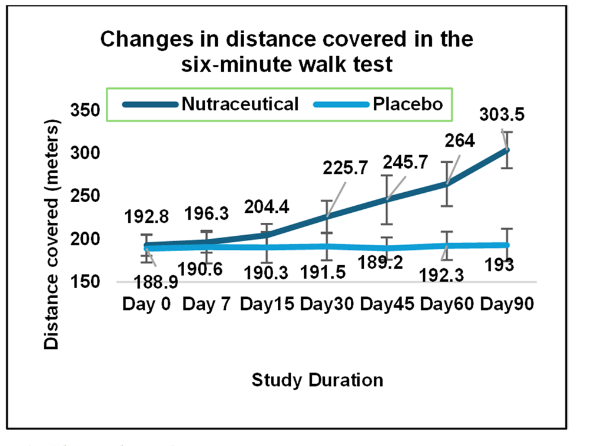
Abstract
Background
Osteoarthritis is the prevailing form of infammatory condition in joints of adults and the aging population, leading to long-term disability and chronic pain. Current therapeutic options have variable therapeutic efcacy and/or several side efects.Methods
A randomized, placebo-controlled, double-blind clinical trial was conducted in 62 participants using a nutraceutical [standardized Boswellia serrata Roxb. gum resin (300 mg) and Apium graveolens L. seed extract (250 mg)], to determine its safety and efcacy for supporting cartilage health and reduction in knee osteoarthritis symptoms. All participants were assessed for physical function and pain with the help of WOMAC, VAS, Physicians' Global Assessment for the six-minute walk test/pain. Knee X-ray, KOOS questionnaire score, and FACIT-F score were assessed. Additionally, infammatory, cartilage degeneration and regeneration biomarkers in serum and urine were evaluated at baseline and after 90 days of treatment.Results
Oral administration of the nutraceutical resulted in prolonged symptomatic relief with reduced pain, stifness, and swelling. Infammatory (serum IL-7, IL-1, IL-6, hs-CRP, TNF-α, ESR) and cartilage degeneration biomarkers (serum CTX-II, COMP, MMP-3 and urinary CTX-II) were decreased in the nutraceutical group compared to baseline and placebo. Furthermore, serum N-propeptide of collagen IIA (PIIANP) and procollagen-type-C propeptide (PIICP) levels were increased in the nutraceutical group, suggesting collagen synthesis contributing to cartilage regeneration. At given doses for 90 days, there were no adverse effects based on the clinical examination, biochemical, hematological, and ECG analysis.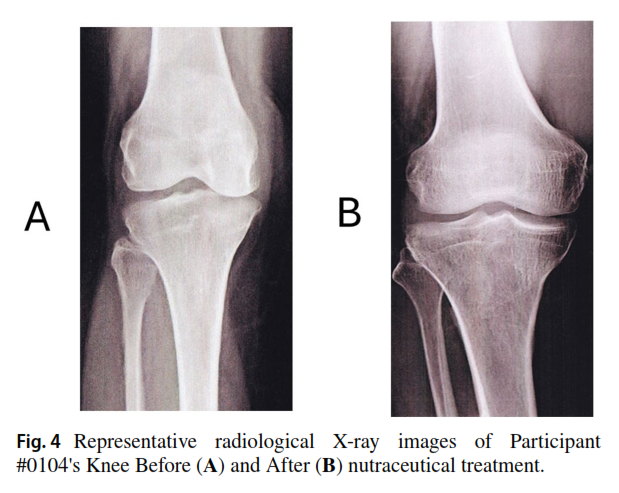
-
-
Here is the horse study.
Figure 1. Box-plots of score change at time 0 and after 59 days for the parameters ’amplitude of passive flexion’ (A) (median of the Control group 0.0 with a range between −2.0 and 0.0, median of Group B 1.0 with a range between 0.5 and 2.0), ’sensitivity to passive flexion’ (B) (median of the Control group 0.0 with a range between −2.0 and 0.0, median of Group B 1.0 with a range between 0.5 and 2.0) and ’flexion test’ (C) of horses treated with 30 g BID CSE (Group B) (median of the Control group 1.0 with a range between −5.0 and 2.25, median of Group B 5.0 with a range between 4.75 and 5.25), and controls. The asterisk indicates p < 0.05.
Animals 09 00585 g001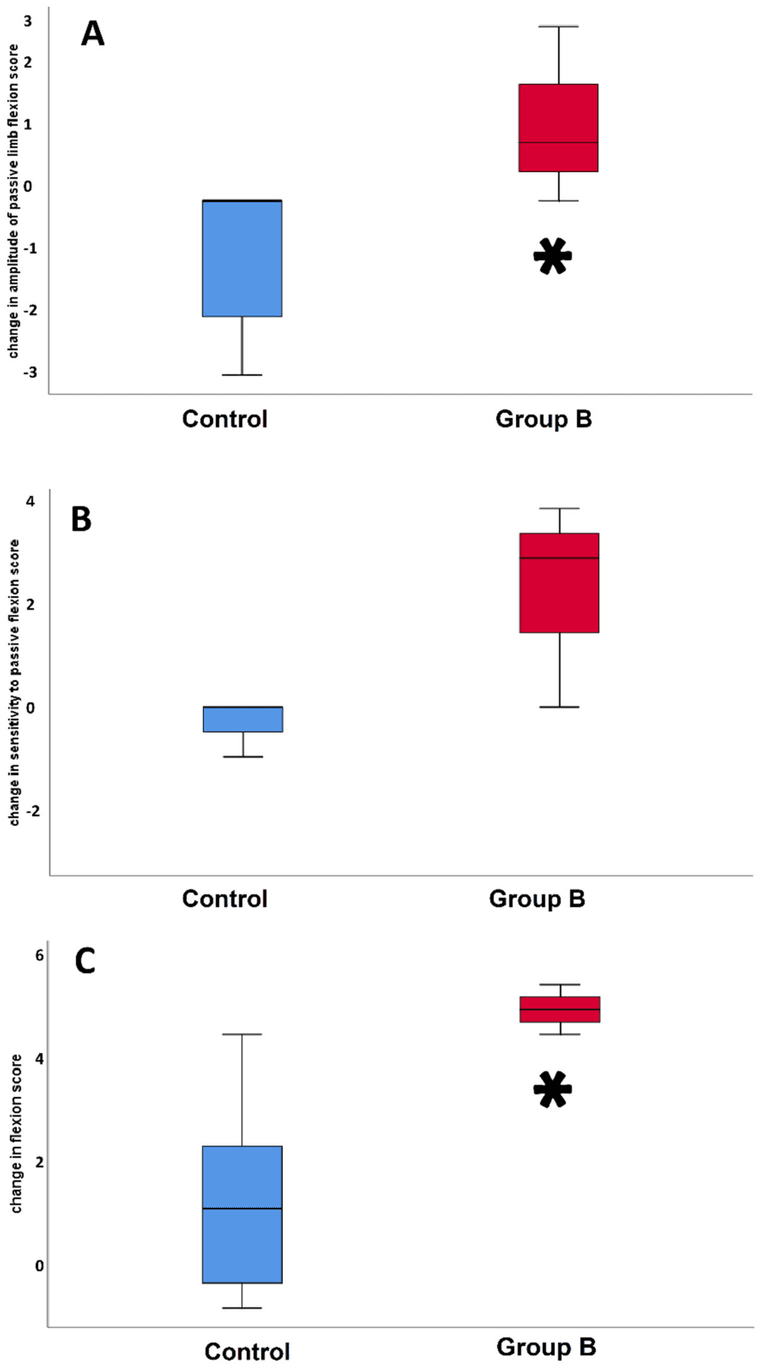
-
I've got this information on my PC:
Boswellia and Inflammation
Boswellic acid has an impact on:
PGE (cox1 & 2 + Lox-5)
Cytokine (IL-1B)
NK-kB (The nuclear factor NF-κB pathway)
NO (nitric oxide)
HLE (human leukocyte elastase)NB: 3 - 500 mg boswellic extract 2 or 3x/d. If 30 to 40 % extract.
The extract of Boswellia serrata, a plant widely used in the treatment of joint inflammation in Ayurvedic medicine, contains an active component, beta-boswellic acid, which can inhibit 5-lipoxygenase, the key enzyme in leukotriene biosynthesis. In addition to inhibiting Lox-5 and blocking the biosynthesis of dangerous inflammatory leukotrienes, boswellic acid decreases the activity of another pro-inflammatory enzyme, HLE (human leukocyte elastase). HLE is associated with rheumatoid arthritis and respiratory diseases such as pulmonary emphysema, chronic bronchitis, and acute respiratory distress syndrome. In many inflammatory diseases, both leukotriene and HLE levels are elevated. Boswellic acid currently appears to be one of the only substances capable of inhibiting both leukotrienes and HLE (5).
Thirty subjects with knee osteoarthritis participated in a 16-week randomized, double-blind, placebo-controlled study. All those taking a supplement containing boswellia extract reported reduced pain and swelling, increased knee flexion, and the ability to walk longer distances. (6)
Source: nutranews
http://www.nutranews.org/sujet.pl?id=972 (In French)NB: If you block one pathway, repeatedly or habitually, the body will eventually bypass the problem, and the inflammation will find another way in.
Therefore, we must address both the causes and more respectful means. By more respectful means, I mean promoting the natural pathways for metabolizing eicosanoids (very long-chain fatty acids, such as EPA, DHA, and GLA), which naturally combat cycloxygenases and 5-lipoxygenases (Cox and Lox).
=> Not too long. Do not block the same access route for too long. It is necessary to alternate PGE 1 / PGE 3 moderation and reduce stimulation. -
Beside lowering Nf-kB etc., the celery extract mostly but not exclusively contains apigenin so there could be epigenetic cellular reactivation through HDAC-inhibition.
Both celery extract and apigenin, and flavonoids in general (?), seem to promote breakdown of calcium oxalate. Which is of course a significant factor with regard to maintaining or building bones but also to dissolving kidney stones. They seem to free up and excrete renal calcium from calcium-oxalate calculi. If the same happens in upstream bodily tissues there should be more calcium re-availability for the bone matrix as well as a reduction in soft-tissue calcification. I.e. a return to better joint and cartilage functions with reduced pain and building of bone.
Anticalculi Activity of Apigenin and Celery (Apium graveolens L.) Extract in Rats Induced by Ethylene Glycol–Ammonium Chloride -
@LucH - Thanks, it is useful to know. I have never had a need to try boswellia.
-
@CrumblingCookie - I get my apigenin from dried parsley. I have been liberally sprinkling it on my food for at least 3 years. I use it for forestall mitochondrial dysfunction, For the details, here the thread.
https://lowtoxinforum.com/threads/cd38-dictates-age-related-nad-decline-and-mitochondrial-dysfunction-through-an-sirt3-dependent-mechanism.45394/ -
@DavidPS

Great one
has a big conflict of interest with funding but theres extra support here (not declared as a conflict but another brand supplied, korean tho so separate locations) https://www.mdpi.com/1422-0067/25/6/3218
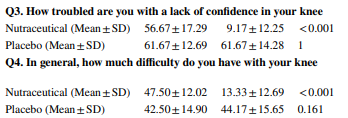
regen marker

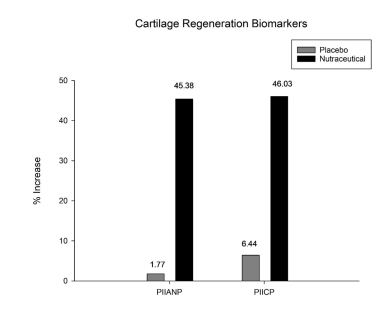
in the boswellia capsule 300mg
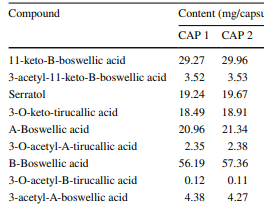
in the celery capsule 250mg

-
@cs3000 said in Repairing Knee Osteoarthritis and Cartilage Degeneration with the combination of Boswellia and Celery Seed::
in the boswellia capsule 300mg

in the celery capsule 250mg

~100mg acids is where the benefits are at but theres a study in animals where 0.1% diet of this with 30% acids made colitis worse (like 1g of a 30% extract- and thats spaced apart in diet too)
only for the initial damage though, recovery was still there and from a higher amount so i think it still shows accelerated recovery.
but the initial higher damage is there. maybe its specific to the way its induced with DSS.
https://sci-hub.ru/10.1152/ajpgi.00433.2004small amounts spaced apart 300mg * 3 of one with only ~10% acids gave a great effect in humans with colitis https://sci-hub.ru/10.1055/s-2001-15802
(if someone has gut issues , just to be on safer side maybe a good idea to split the dose and avoid high extract % / high dose supplements giving 200mg+ a pill) -
@DavidPS said:
I get my apigenin from dried parsley. I have been liberally sprinkling it on my food for at least 3 years.
Parsley is great! Chives too. I finally pour them generously on my foods too after I've eventually come around to looking for and buying them in bulk online (cut & dried). The local stores simply don't have them.
-
@CrumblingCookie said in Repairing Knee Osteoarthritis and Cartilage Degeneration with the combination of Boswellia and Celery Seed::
Both celery extract and apigenin, and flavonoids in general (?), seem to promote breakdown of calcium oxalate.
Digging into this I discovered the term Chondroprotective agents. These agents "include both endogenous and synthetic chemicals." No mention of exogenous natural sources. A quick search of 2025 pulbications:
Potential Chondroprotective Effect of Artemisia annua L. Water Extract on SW1353 Cell